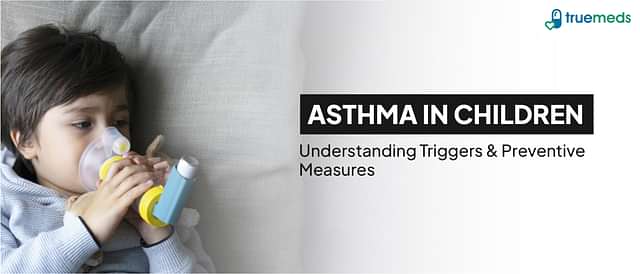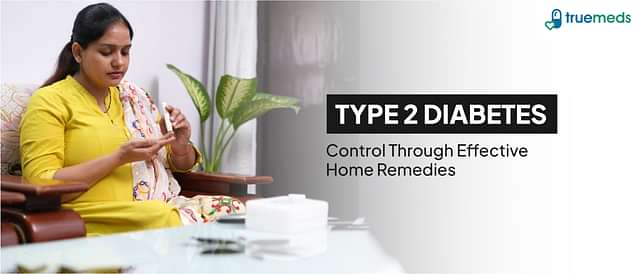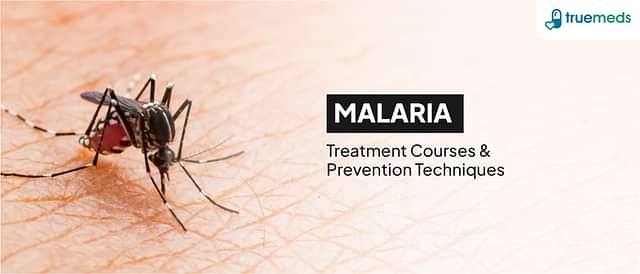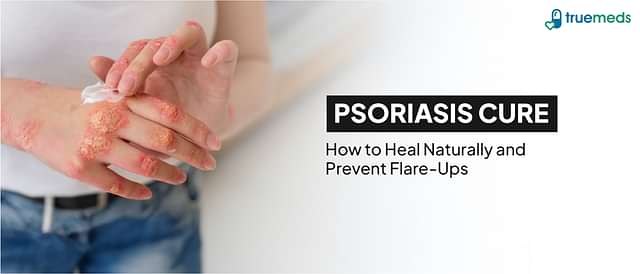Blood Cancer
Blood cancer, also known as leukemia, is a condition in which there is an uncontrolled growth and multiplication of blood cells in the bone marrow and lymph nodes
Last updated on : 16 Oct, 2024
Read time : 14 mins

Overview of Disease
Blood cancer, also known as leukemia, is a condition in which there is an uncontrolled growth and multiplication of blood cells in the bone marrow and lymph nodes. Although blood cancer can affect people in any age group, for various subtypes of blood cancers, there is a tendency to occur more commonly in a particular age group. For example, acute lymphocytic leukemia, a type of blood cancer, is common in children.
The exact cause of blood cancer has not been identified yet. It is believed to occur when the blood and bone marrow cells undergo genetic mutations. Blood cancer can be acute (onset is sudden and more severe) or chronic (develop slowly over a long time and less aggressive) based on the duration of symptoms or it can be lymphocytic or myelogenous based on the type of cells affected. Acute blood cancer may cause symptoms like chronic fatigue, recurrent infections, unintentional weight loss, etc. On the other hand, chronic blood cancer may not show any symptoms initially and symptoms may appear as the condition progresses. Tests such as blood smear examination and bone marrow aspiration are some of the common diagnostic tests used to detect blood cancer. There are various treatment options available that can improve the life of the patient. Treatment modalities such as chemotherapy, immunotherapy, and stem cell transplant are known to help slow the progression of the disease.
Key Factors about Blood Cancer
| Category | Details |
| Usually seen in | Children below 15 years of age (ALL) |
| Gender affected | Both men and women but more common in men |
| Prevalence | Worldwide: 5.185 Lakh (2017) |
Symptoms of Blood Cancer
Certain chronic blood cancers may not cause any noticeable symptoms at first, and symptoms may appear as the condition progresses. Acute types of blood cancer can cause aggressive symptoms such as:
Recurrent fevers
Recurrent infections
Enlarged lymph nodes
Joint pains
Unintentional weight loss
Fatigue and tiredness
Abdominal pain due to spleen enlargement
Easy bruising and bleeding
Nosebleeds and bleeding gums
Tiny red spots in skin (called petechiae)
Purplish patches in the skin
Breathlessness
Confusions
Headaches
Causes of Blood Cancer
Blood cancer is cancer that affects the bone marrow and blood cells. It starts when the DNA of a single cell in the bone marrow gets changed (mutation) and as a result of that, can’t develop, multiply and function normally. This rapid, out-of-control growth of abnormal cells takes place in the bone marrow and lymph nodes of the body. These abnormal cells then spill into the bloodstream.
Also, abnormal and excessive production of the white blood cells or leukocytes causes overcrowding and clumping in the blood vessels. These abnormal cells also reduce the count of other normal blood cells, such as red blood cells and platelets. The white blood cells are responsible for fighting off infections and keeping the body’s immune system healthy. With blood cancer, the abnormal white blood cells are unable to function properly, and thus the body becomes susceptible to infections.
The exact cause of why blood cancer occurs is not yet identified. It is thought to occur when the blood cells undergo genetic mutations and start behaving abnormally.
Risk Factors
Certain factors can increase the risk of a person developing blood cancer. These include:
1. Family history
There is a higher risk of developing blood cancer if a close family member has suffered from blood cancer. This is particularly true for chronic lymphoid leukemia, where there is a threefold to fourfold increased risk of getting the disease if a first-degree relative such as mother, uncle or brother has it.
2. Smoking
Smoking tobacco products and cigarettes increase the risk of blood cancer. 20% of all acute myeloid leukemia cases are linked to smoking.
3. Chemotherapy and radiation
Exposure to chemotherapy or radiation can increase the risk of developing blood cancer in later life.
4. Genetic syndromes
Down’s syndrome, Fanconi’s anemia, Li Fraumeni syndrome, etc., are diseases caused due to genetic abnormalities and have been associated with a higher risk of blood cancer.
5. Viral infections
Exposure to certain viruses such as the Epstein Barr virus, human T-cell leukemia virus, etc., can increase the chances of blood cancer.
6. Exposure to carcinogens
Certain chemicals such as benzene are known carcinogens which increase the risk of blood cancer.
Complications
In the terminal stages, the patient sleeps through most of the day, has reduced appetite, extreme muscle wasting and feeble heartbeat.
It may also cause other complications such as:
Recurrent and serious bacterial or fungal infections.
Tumor lysis syndrome is a side effect of chemotherapy where the tumor cells die quickly and result in dangerously high levels of metabolites, harming the kidneys.
Disseminated intravascular coagulation is a condition in which the blood clots abnormally and leads to thrombosis or hemorrhage.
Blood cancer survivors are at a higher risk of getting other types of cancers as well.
Prevention of Blood Cancer
Avoiding exposure to known risk factors such as benzene, radiation, smoking, etc., may reduce the chances of developing blood cancer.
Diagnosis & Tests
The doctor usually performs a detailed physical examination and notes the history of symptoms.
Laboratory tests, bone marrow studies, and imaging studies are useful in diagnosing and identifying the subtype of blood cancer.
1. Physical examination
Your doctor will look for physical signs of blood cancer such as pale skin from anemia, swelling of your lymph nodes, and enlargement of your liver and spleen.
2. Laboratory tests
Flow cytometry aids in the detection of antigens present on or inside the cells based on their specific characteristics. It also helps in monitoring the recurrence of the disease, assessing the extent of cancer, and checking the efficacy of ongoing treatment.
- Cytochemistry helps in the diagnosis of different types of acute blood cancers with the use of cytochemical stains.
Complete blood count (CBC) is required to study the quantities and morphology of the different blood cells.
Peripheral smear examination is necessary to evaluate the blood cells in greater detail.
Supportive tests like coagulation profile, kidney function test, liver function test, etc., may be essential to evaluate the overall health status.
3. Bone marrow studies & biopsy
- Bone marrow biopsy is a procedure in which a needle is used to withdraw a sample of the cancerous cells or tissue from the bone marrow. It uses the immunohistochemistry technique which helps in the diagnosis of abnormal cells such as those found in cancerous tumors or tumor markers.
- Bone marrow aspiration is a procedure in which a sample is drawn from the fluid portion in the bone marrow with the help of a fine needle. It uses the cytochemistry technique to check cancerous cells.
- Lymph node FNAC & biopsy is used to examine lesions or lumps inside the body observed by touch or during a scan to detect tumors in different parts of the body.
4. Imaging studies
- A PET CT scan (whole body) may be performed to check for signs of blood cancer in the body.
- CT Scan not only helps to check for the presence of cancerous cells but also plays a vital role in the treatment of blood cancer such as bone marrow transplant.
- Your doctor may order a chest X-ray or magnetic resonance imaging (MRI) scan if you have symptoms that indicate a complication of leukemia.
5. Lumbar puncture
A lumbar puncture (also called a spinal tap) may be ordered to see if cancer had spread to the spinal fluid surrounding the brain and spinal cord.
Treatment & Management
Treatment of blood cancer depends on the type of disease and the patient’s overall health condition. Majorly, the treatment approaches are as follows:
1. Chemotherapy
Chemotherapy medicines are the mainstay of treatment used to kill cancer cells. Chemotherapy agents are either given as an intravenous drip into a vein or a central line or given in shots under the skin (subcutaneously) or as oral medications on a regular basis or in a pattern of fixed chemotherapy cycles. In chemotherapy cycles, a certain number of days of treatment are followed by days of rest to allow the body to recover. The chemicals kill leukemia cells or stop them from dividing. Often, a combination of chemotherapy agents is used to treat cancer.
The length of time for treatment can vary by regimen ranging from six months to indefinite treatment. These include drugs such as:
2. Targeted therapy
With targeted therapy, drugs are given against a cancer cell-specific target. These targets of drugs are generally not present in normal dividing cells of our body. In this way, adverse effects of drug treatment on normal cells can be avoided. Examples of targeted therapy include:
Monoclonal antibodies such as inotuzumab, gemtuzumab, rituximab, ofatumumab obinutuzumab, and alemtuzumab
Tyrosine kinase inhibitors such as imatinib mesylate, dasatinib, nilotinib, ponatinib, ruxolitinib, and fedratinib.
These therapies are generally expensive but more specific in their action.
3. Immunotherapy
As the name suggests, immunotherapy works by helping the immune system work to fight cancer cells. This therapy uses substances that activate the body's immune system to work against the cancer cells. Common examples are:
4. Radiation therapy
This therapy uses radiation (high-energy rays similar to X-rays) to kill the cancer cells. This treatment uses strong beams of energy to kill the focus present in the body forming cancer cells (lymph nodes) blood cancer cells or stopping them from growing. Radiation is directed to exact sites in your body where there is a collection of cancer cells or can be given over your whole body as part of a hematopoietic cell transplant.
This therapy can also be used along with other treatment modalities such as chemotherapy and surgery.
5. Stem cell transplant
Also known as hematopoietic stem cell transplant or bone marrow transplant, this procedure replaces the cancerous blood-forming cells with new, healthy hematopoietic cells. These healthy cells are taken from the patient itself (before exposure to chemotherapy or radiation therapy) or from a donor’s blood or bone marrow and are infused into the patient's blood. Healthy hematopoietic cells grow and multiply forming new bone marrow and blood cells that develop into all the different types of cells your body needs (red blood cells, white blood cells, and platelets).
6. Supportive care
Supportive care is required for patients to help stimulate the production of blood cells, combat infections, and manage side effects such as nausea and vomiting.
Antiemetic drugs such as ondansetron and palonosetron provide relief from nausea and vomiting.
Recombinant human erythropoietin alpha preparations help produce red blood cells and help treat anemia due to blood cancer or post-chemotherapy.
Various antibiotics and antiviral medications are used to prevent and treat infections.
.
7. Chimeric antigen receptor (CAR) T-cell treatment
This is a new form of therapy where the patient’s own T-lymphocyte cells are harvested and engineered in the laboratory to make them capable of fighting the blood cancer cells. These cells are then reinserted into the body.
Note: A treatment plan will be developed specifically for you. Several of the treatment methods described above will be a part of your treatment plan. Your treatment depends on your age, overall health, type of blood cancer and other unique features of the blood cancer, response to initial treatment, and many other factors. Your doctor (oncologist) will determine a treatment plan they think will be most successful for you.
Living with Blood Cancer
Most people who are diagnosed with blood cancer tend to enjoy a healthy and long life after being treated successfully. Thanks to the recent advances in treatment, the chances of survival for blood cancer are fairly improving. Although getting detected with cancer can impact the emotional health of both the patient and their families, with early diagnosis and effective treatment, the patient can lead a good life.
As blood transfusions, chemotherapy, and their side effects become part and parcel of life, several lifestyle changes are essential to keep fatigue and infections at bay. Anxiety can be overwhelming at times, and initially many people feel a sense of loss of control and uncertainty about the future. It is important that you talk about how you feel with someone you trust or feel comfortable with. This might be a friend or relative or it might be your doctor or nurse. Counselling and antidepressant drugs can also be very useful for some people.
Here are a few tips that may help blood cancer patients to stay happy and positive:
1. Learn about your diagnosis
Don’t be afraid to ask your healthcare team about anything you don’t understand. It is best to ask your doctor about your health and the condition rather than search online or depend on other people for help.
2. Join a support group
Staying positive during cancer treatment can be a lot easier if you have other people cheering you on. A support group can keep you cheered up since the other participants will have their own insights into cancer treatment. You can even find inspiration from the other members, or strategies for coping with pain or other side effects of treatment.
3. Surround yourself with supporters
When you’re feeling low, one of your friends or family members can provide some much-needed encouragement. When you’re feeling distressed, a trained mental health counselor can be of great help.
4. Pursue a passion or hobby
Engage yourself in the hobbies which have given you pleasure in the past. It could be reading, writing, dancing, travelling, etc.
5. Make sleep a priority
Sleep can be elusive when you’re feeling anxious or depressed, or even just exhausted from your cancer treatment. But a lack of sleep can make you feel even more anxious or despairing. You’re more likely to feel positive if you’re well rested.
FAQs
Can blood cancer be cured?
How can one stop the progression of blood cancer and its complications?
How can I find a stem cell donor for my child who has blood cancer?
Will my child survive normally after a stem cell transplant for blood cancer?
Is blood cancer genetic? Will it pass down from parent to child?
Browse Other Conditions
Latest health articles
Disclaimer
Top-Selling Medicines:
...View more
Top-OTC medicines:
...View more
Company
About UsHealth ArticleHealth StoriesDiseases & Health ConditionsAll MedicinesAll BrandsNeed HelpFAQSubscribe
Registered Office Address
Grievance Officer
Download Truemeds

Contact Us
Our customer representative team is available 7 days a week from 9 am - 9 pm.
v3.7.5
Our Payment Partners



































